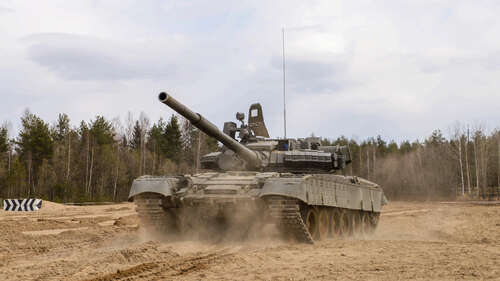
A tank with powerful weapons isn’t useful if its hull is fragile and vulnerable to enemy fire. However, if you add too much armor, the tank will lose maneuverability and speed. Soviet engineers struck an optimal balance, with the T-72 building off the previously made T-64 tank. The front steel armor on the T-72 was over 400 millimeters thick and could survive both shoulder-mounted and fixed anti-tank missiles.
One of the potential dangers during the Cold War was nuclear, biological, and chemical weapons. What if the three-person crew was hit with a toxic gas, radiation, or other unseen attacks? Fortunately, the T-72 was equipped with robust anti-NBC (nuclear, biological, and chemical) technology that included radiation protection and automatic fire suppression. With more than adequate armor surrounding the tank and turret and extra measures against warfare’s nastiest options, the T-72 held its ground well.

